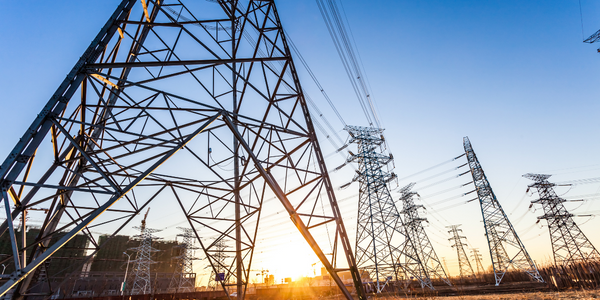Download PDF
Logistics Warehouse Dramatically Transformed by Lighting System Upgrade with Flex Lighting Solutions
Technology Category
- Functional Applications - Warehouse Control Systems (WCS)
Applicable Functions
- Warehouse & Inventory Management
Use Cases
- Warehouse Automation
- Energy Management System
Services
- System Integration
The Challenge
As business evolved at Port City Logistics, so did their 180,000 square foot warehouse and its primary use. They had undergone a conversion of their warehouse from a set up utilizing area lighting to reconfiguring the 80% of the space to house rack storage. This created a challenge replacing outdated lighting technology and a need to redesign their lighting floor plan as a whole. After the modification, this also presented a huge illumination challenge, with all the lights placed now in the wrong place. On top of the placement issue, the incumbent lighting system consisted of T5 fluorescent lighting. This outdated lighting not only added to a dismal light level problem but also experienced expensive energy consumption, high maintenance costs and safety concerns regarding broken glass and mercury content.
About The Customer
Port City Logistics is a logistics company based in Savannah, Georgia. They operate a 180,000-square-foot Food Grade Warehouse and Distribution Center near the Port of Savannah. The company recently converted one of their warehouses from food to bulk storage, a change that required a new floor plan and a reconfigured aisle racking. The existing lighting system did not have the flexibility to meet the new lighting requirements, wasting light in some areas and leaving others too dark. The incumbent lighting system consisted of T5 fluorescent lighting, which was not only outdated but also added to a dismal light level problem, experienced expensive energy consumption, high maintenance costs and safety concerns regarding broken glass and mercury content.
The Solution
Port City Logistics realized they were in need of a lighting overhaul to fix their lighting challenges. The first step was to diagnose the current lighting layout and come up with a solution that fit the new configuration and made economic sense. They discovered that with all the new rack storage, the warehouse had too few lights now to properly illuminate the space. The products stacked on the racks blocked the light output from some of the old lights. Flex Lighting Solutions and LED Lowcountry worked together with Port City Logistics to design lighting layouts to create a new floor plan. Together, they showed them how they could properly light their facility with the number of fixtures in each aisle. The new lighting floor plan was created and to meet the lighting requirements fixture count increased from 143 8-lamp T5 Fluorescent fixtures to 203 Essential Series 4.0 LED high bays. This upgrade eliminated the costs and time to continuously service 1,144 fluorescent lamps. To secure optimal light levels for the different areas of the warehouse, the Flex Essentials Series 4.0 LED high bays were set to 23,000 lm for the open areas and 15,000 lm in the aisles. These Flex LED high bay’s used in the aisles were equipped with special aisle lenses to direct the light to the floor.
Operational Impact
Quantitative Benefit
Related Case Studies.

Case Study
IoT Solution for Cold Chain
Most of the customer's warehouses run on utility and generator power. Since these warehouses are in remote locations, power outages are a very common scenario. Diesel fuel, thereby, becomes a significant cost for these warehouses. Energy consumption was also very high due to the lack of a consistent temperature throughout the facility. This lack of a consistent temperature in all areas and no way to control it, resulted in the customer losing a significant amount of their temperature sensitive goods due to spoilage.

Case Study
Driving Network Efficiency and Fraud Detection Efforts
Baltimore Gas and Electric Company (BGE) wanted to optimize the deployment and ongoing health of its advanced metering infrastructure (AMI) network and identify and reduce unbilled energy usage. BGE wanted a solution to deliver an annual economic benefit of $20 million.

Case Study
IoT based Energy Quality Availability Monitoring Solution
There were several challenges faced:Since this data would be in the public domain, accuracy and authenticity of this data were of paramount importance. It should be able to withstand scrutiny.It is challenging to build an appliance that can withstand a wide range of voltage fluctuations from as low at 90v to as high as 320v. Since the device would be installed in remote locations, its resilience was of paramount importance.The device would have to deal with poor network coverage and have the ability to store and re-transmit data if networks were not available, which is often the case in rural India. The device could store up to 30 days of data.The platform that deals with the data should be readily available and highly reliable and never lose a packet of data.

Case Study
DSV Road levels their workflow and decreases stress thanks to 4 BT Autopilots
During peaks in the workflow employeescan experience stress which makes them prone to causing damage. Avoiding these peaks also eliminates the need to hire temporary workers that require extra time and costs for education.
-Systems.png)
Case Study
Product Development for Power Line Communication (PLC/BPL) Systems
The client wanted to develop a product that can acquire data from their meter units installed at the consumer's premises. A system capable of acquiring, transferring and archiving the data had to be in place, replacing the existing traditional method which was error prone and expensive to operate. The system needed to be integrated with the existing Customer Relationship Management (CRM) system for increasing the operational efficiency.





